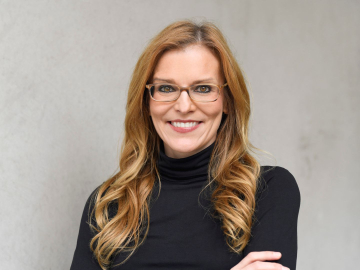Championing Triple Ownership Programs (TOPs) in Executive Education: How participant and sponsor ownership leads to better program outcomes

What do you associate with the word “campus”?
For most of us, besides the happy student memories, there are aspects of university life that we were glad to leave behind. Perhaps your mind jumps to that particularly stuffy lecture theater, with its regimented rows of uncomfortable seats. Or perhaps to a particular professor, who could monologue for hours and hours… and seemed oblivious to the (dire) mood they created in the classroom. Maybe you have a specific emotional memory instead – for example, the stomach-curdling anxiety you felt as you crammed for your final exams.
Rules, regimented schedules, and rote learning – all dictated by one lecturer, standing at the front of the room. Is this what adult executive participants have later come to associate with campus education?
Ownership
For ESMT executive education faculty, decades of experience have revealed a simple truth: actively and consistently involving participants in proceedings is a magic ingredient in creating real impact.
Allowing individuals to shape what and how they learn is a proven shortcut to getting complete buy-in and expedites the type of intervention that the program seeks. This ultimately translates to higher levels of group focus and motivation, stronger networking, and a longer-lasting impact for each participant.
Arriving on campus for the first day of a leadership development program, executives can often feel anxious and ill at ease. They will not play their usual professional role – instead, they are back in the role of “student.” A little adrenaline is normal and helpful in the learning process – personal development takes place when we step outside our comfort zones. However, care must be taken to ensure that no one falls over the precipice from the “learning zone” into the “panic zone.” Give them back their agency by sharing ownership and accountability in the program design and implementation.
Sharing accountability
In the opening session of an executive education program, participants expect to hear a number of rote details from the program director: information about their professional background, why they developed the program, how the next few days will proceed (including when they will get coffee breaks and time for other work or personal tasks!) and what they should achieve by program’s end.
Participants of a typical open-enrollment program at ESMT come from vastly different industries, functional areas, and business cultures. Even seemingly simple social conventions – for example, whether they should we be on a first name or last name basis with the program team and with each other – can lead to anxiety or discontent. It is thus important to openly consider, define, and discuss these issues to shape the executive education classroom .
Lowering or removing hierarchical relationships between the program director and the participants can be an important first step. In ESMT programs, a kick-off meeting introduces participants to effective brainstorming methods and their team roles. The group is charged with picking a chief rules officer (CRO), who will be responsible for facilitating important conversations about cultural differences and expectations and ensuring they remain lighthearted. The CRO, for example, will take care of asking participants to return to the classroom at the end of each coffee break. The role can change hands each day if the group so wishes – or the consensus may even be that “there are no rules.” The simple act of appointing a CRO, dissociated from the program director, is enough to make participants feel they share accountability for the classroom atmosphere. In the ESMT experience, participant discipline and engagement increased as a result.
Another key tool in sharing accountability is to have the group select a chief learning officer (CLO). Finding the right balance between teaching academic theory and exploring immediate practical relevance – both for at individual and organizational levels – is a common challenge for program direction. There are no hard-and-fast rules to divulge here – the correct proportions will differ from topic to topic and from participant to participant, and require both high sensitivity and flexibility over the course of the program. By allowing a CLO to shape the program agenda instead, the group is given a voice in the proceedings. The CLO reports to the program director if participants believe that too much or too little emphasis is being placed on one theme or another. The CLO may also choose to run regular reflection groups to debrief on lessons learned – which also provides valuable insight for the program director on how the sessions were perceived.
Other roles can further enrich and deepen the participant experience. When invited speakers and experts are included in the program agenda, tasking one or two participants to act as program moderators helps to align the content with the group’s specific needs and expectations..
Because participants often expect opportunities to build their professional network, they can be tasked with making it happen. For example, participants can organize “networking groups” to plan the evening events during a multi-modular program. In doing so, participants learn a lot about individual and cultural preferences. Working together on a shared project like this, participants regularly report building much deeper connections with their peers and their sponsors.
Sharing accountability can even be extended to sports and recreational activities. A chief happiness officer (CHO) becomes responsible for getting the room into the right frame of mind for transformative learning. CHOs are given a lot of creative freedom with their remit – they may choose to fire up energies in the early morning with a blast of an 80s power ballad, lead a short physical workout, or set up a competitive team-building exercise to battle the post-lunch energy lull.
Project work and participant cases
Integrating project work into program design can also grant participants real autonomy. While a company-board-assigned sponsor helps define the scope of each project and ensures organizational relevance, the program director can directly ask the participants for topics. This bottom-up approach can boost participant buy-in and allows the board to get a fresh perspective on what really drives their top talent.
In parallel, board members are also asked to field potential topics. These can be broad and yet of strategic importance, such as “internationalization strategy” or “trend analysis in X market.” Getting the board involved carries an element of risk. Sometimes, the board’s expectations of the project scope are extremely high and not easy to fulfill. They see a group of motivated, up-and-coming employees and seek to use them as project consultants, even proposing topics beyond the scope of the program. It is the program director’s task to manage board expectations on outcomes. (After all, participants in a leadership development program are not full-time consultants on a particular company issue.) In the best case, the board will be able to build on the group’s initiative.
The program director then aligns the project proposals with the learning objectives of the program: choosing one project from the participants, one from the board, and one topic proposed by both. The desired outcome is often a final presentation to the board just before the end of the program. This doesn’t have to mean a “point and pontificate” PowerPoint presentation. Past programs at ESMT have seen presentations in the form of short films and role-plays.
Harnessing new technologies
A wealth of classroom technologies is now available to actively involve participants. Mentimeter is brilliant for collecting and visualizing votes and opinions, whereas MURAL and Miro facilitate infinite-scale brainstorming. Quiz tools such as Kahoot, and virtual simulation games such as ESMT’s The Virus, have the power to make reflection or content recaps into a competitive sport. Participants can be invited to experiment with these tools in smaller study groups; they may subsequently introduce the tools into their own team meetings after the program’s end.
New technologies also generate new ways to inspire busy executives, both in the classroom and in their free time. Podcasts, YouTube channels, TED Talks, and Netflix series can enhance pre- and post-program resource lists. This dissociates solo learning time from the concept of “homework” – rather, the preparation time is more about priming conversation starters. In a modular program, c-level or unplugged talks can be sprinkled throughout the program agenda to help participants review key program elements – leading to lively group discussions in the breaks.
Of course, if the coronavirus crisis has taught us anything, it is that there are also limitations to technology. Virtual wine tastings via Zoom has confirmed – without a doubt – that networking is a much more attractive prospect when you can sit together physically!
The future is TOP
By empowering participants to become the CRO, CHO, or CLO of a program, program directors explicitly share responsibility for classroom learning and engagement with the group that will ultimately benefit from it. This includes the individual executives, who seek personal development and career progression, and the client HR partners, who sponsor the seats in good faith that the investment will bear fruit for the firm.
Such a “triple ownership program” (TOP) thus describes a new gold standard in the executive education industry. The magic of a true TOP is that the business school, the client HR partner, and the executives all get the opportunity to reflect on what they need. The program director is thus no longer a single, dominant force in program design and execution, but rather a facilitator of a co-creation and co-ownership process. Moreover, emphasizing triple ownership from day one also helps break the association between being “on” in a classroom and being a passive listener, engaging participants in their learning in powerful ways and resulting in uniquely beneficial outcomes for all.
This article was originally published by The European Business Review on March 8, 2022, and republished with permission.


